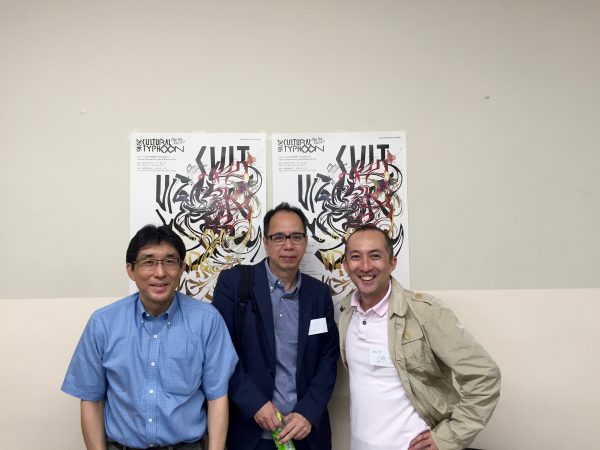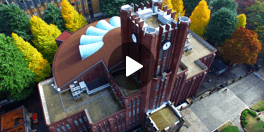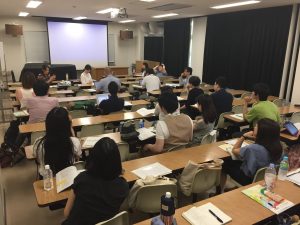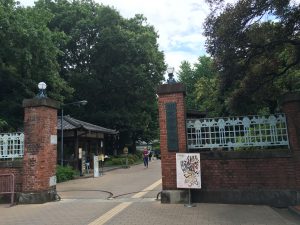
August 7, 2016
カルチュラル・タイフーン2016Cultural Typhoon 2016
2016年7月2-3日、カルチュラル・タイフーン2016(カルチュラル・スタディーズ学会主催)「それを感じられるか?Can You Feel It ? ー グローバル化する都市への文化的介入」が東京藝術大学上野キャンパスで開催された。800名以上の参加者を集めた同会は、学環・学府の教員・出身者・院生の活躍の場でもあった。
カルチュラル・タイフーン(文化台風)は2003年に初めて開催され、それ以降毎年、国際的な研究・文化交流の場を提供してきた。また、「カルチュラル・スタディーズ学会」として学会化した2012年からは「年報カルチュラル・スタディーズ」を発行している。14年目となる今年のカルチュラル・タイフーンは、芸術と文化の実践、とりわけそれらと社会や都市の編成、グローバル化との関係がテーマとして設定された。
準備事務局は情報学環教授・吉見俊哉研究室と東京藝術大学教授・毛利嘉孝研究室のメンバーを中心に構成され、国内外から200件を超える多彩なテーマの研究報告(ペーパー応募・パネル応募)とプロジェクト・ワークス(ワークショップ、パフォーマンスなど)の応募が寄せられた。
国際的に著名な研究者の基調演説を始め、院生や若手研究者のパネルディスカッションや芸術と社会のつながりを図る活動を紹介するブース展示など、当日は多種多様なイベントがとり行われた。パネルの例を一つ取り上げると、「建築・メディア・ポリテクス: ミュージアムの拡張戦略とイメージ構築」では、学際情報学府博士課程に在籍している潘夢斐と藤嶋陽子、学際情報学府出身で現在関西大学社会学部教授の村田麻里子氏、東京経済大学コミュニケーション学部准教授の光岡寿郎氏が様々な角度からミュージアムの持つ社会的意味について発表し、活発な議論を行った。
従来は教育の領域と考えられていたミュージアムという場に娯楽的要素が積極的に導入されることで、両者の間の境界が曖昧になっているという共通認識から、各パネリストがそれぞれの視座からミュージアムを捉えなおす新しい理論の必要性を呼びかけた。吉見教授もディスカッションに参加し、このような現象はミュージアムに限られるジレンマではなく、その他の領域、特に大学において顕著にみられる事態であるという意見を述べた。
パネルだけでなく、社会実践やアート活動を紹介するブース・エリアも賑わっていた。その中の一つのブースでは雑誌『5』の販売が行われていた。『5』は情報学環長・学際情報学府長の佐倉統教授と情報学環の水越伸教授が編集メンバーとなって、メディア研究とコミュニケーション研究に関する様々な成果を日英両言語で発表している雑誌だ。
『5』の隣のブースでは、ブースに訪れた人たちから上野エリアについてのオーラル・ストーリーを集め、地図上にプロットする「Telephonoscope」という実験が行われていた。この活動は水越教授を始めとする日本とフィンランドの研究者によるデジタル・ストーリー・テリングの共同プロジェクト(「Storyplacing」)の一環として行われた。
カルチュラル・タイフーン2016は国際的な知の蓄積と活性化、研究者に限らない様々なアクター間でのネットワーク作り、また学術界の知見を社会に広める場を提供した。2016年9月22日-25日の間には、カルチュラル・タイフーンの理念に共感する若手研究者を中心として、オーストリア・ウィーン大学で「Places and Spaces of Cultural Production in East Asia」と題した研究大会が開催される。
記事:潘 夢斐、近藤和都
During July 2nd and 3rd, 2016, Cultural Typhoon 2016: Can You Feel It? Cultural Intervention in Globalising Cities, was held at Ueno Campus, The Tokyo University of the Arts. Attracting more than 800 participants, it also saw great engagement with iii/GSII faculty members and students.
Started from 2002, Cultural Typhoon has been organizing its annual international conferences and journal, The Annual Review of Cultural Studies. This year, 14th year in its history, featured art and cultural practices with a particular focus on practices related to society, formations of city and globalization.
Logistically supported by the labs of Prof. Mori Yoshitaka (Tokyo University of the Arts) and Prof. Yoshimi Shunya (iii/GSII, University of Tokyo), it received more than 200 paper/panel/project work (performance, workshop, etc.) applications covering an array of topics from both within Japan and abroad.
As a grand event involving diverse activities, this year not only highlighted keynote speeches from distinguished professors but also panels by young scholars and booths introducing socially engaged activities. One panel, Architecture, Media, and Politics: Expansion Strategies and Image Construction of Museums in Contemporary Society, organized by Pan Mengfei and Fujishima Yoko, two Ph.D. students from GSII, Murata Mariko (alumni of GSII; professor, Kansai University) and Mitsuoka Toshiro (associate professor, Tokyo Keizai University), presented and heatedly discussed over the meaning of museums from different angels.
The panel developed a consensus over the increasingly ambiguous boundary between education and entertainment when entertainment elements have been proactively introduced into museums that have been long employed as a place for education. From their individual perspectives, the panelists called for new theoretical efforts to understand contemporary museums. Prof. Yoshimi also joined the discussions and argued that it was not a dilemma limited to museums but shared widely, especially with universities.
In addition to panels, the booth area presenting varying socially engaged activities also attracted visitors. One booth was dedicated to 5: Designing Media Ecology, a bi-lingual magazine (Japanese and English) in the field of media and communications edited by Mizukoshi Shin and Sakura Osamu, Professors from iii/GSII.
At the neighboring booth exhibited “Telephonoscope” that collects oral stories about the Uneo area from the booth visitors and plots them onto a map. Co-organized by Mizukoshi Shin and researchers from Japan and Finland, this was a part of a digital storytelling project, “Storyplacing”.
Cultural Typhoon has been accumulating and stimulating knowledge, developing network across different sector and the globe, and endeavoring to make academic contributions widely open to the society. The next event will be “Places and Spaces of Cultural Production in East Asia”, 22nd to 25th September 2016, at the University of Vienna, Austria.
写真1枚目:
Photo credit: Prof. Mizukoshi Shin
左から:
東京大学情報学環長・学際情報学府長 佐倉統教授
東京藝術大学 毛利嘉孝教授
東京大学情報学環・学際情報学府 水越伸教授
From left: Prof. Sakura Osamu (director of iii/GSII, University of Tokyo)
Prof. Mori Yoshitaka (Tokyo University of the Arts)
Prof. Mizukoshi Shin (iii/GSII, University of Tokyo)
写真2枚目:
Photo credit: Jiewon Song
パネル「建築・メディア・ポリテクス: ミュージアムの拡張戦略とイメージ構築」会場
Panel, Architecture, Media, and Politics: Expansion Strategies and Image Construction of Museums in Contemporary Society


